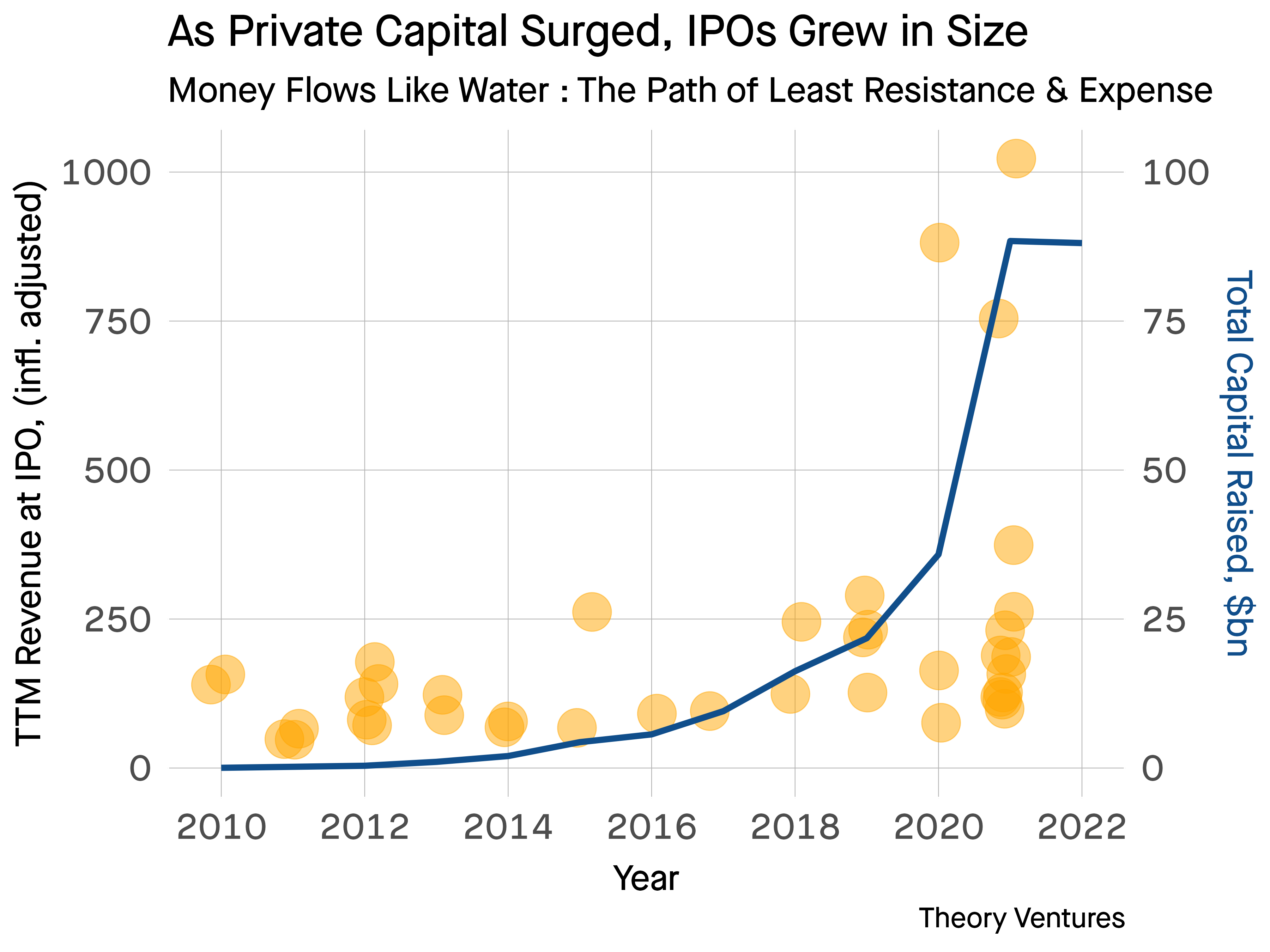What does it take to go public? Has it changed over the last 15 years?

We gathered data on the US venture-backed software companies that went public between 2010 & today. We corrected the trailing 12 months’ revenue at the time of IPO for inflation & plotted the data.
Before 2018, only one company IPOed with more than $200m in revenue. In fact, the median revenue at IPO at $90m. Today, the median revenue at IPO is $189m (corrected for inflation), more than double.
This ratio is roughly true across the board for 25th & 75th percentile-sized companies as well.

If we divide the data set into two eras : before 2018 & 2018 onwards, we see a clear shift in the average revenue at IPO & the difference is statistically significant with a p value of 0.0063.
Before 2018, 11 companies went public with less than $100m in trailing revenue. Afterwards, only 2.
Why such a difference? IPOs are extremely expensive.
A company with about $100m in revenue will pay between $9-26m to go public.1
| Cost Category | Typical Amount |
|---|---|
| Underwriting Fees | 12 |
| Legal Fees | 2.5 |
| Accounting Fees | 1 |
| Other fees | 1 |
| Total | 16.5 |
For a company generating $100m a year, this means an IPO cost 16% of their revenue to raise a round of capital : likely the most expensive capital raise of the company’s life.
For a later-stage company, the costs of a private financing might may touch $1m in the upper reaches, but is much more likely to be measured in the hundreds of thousands of dollars.
As private dollars entered the late stage market, why wouldn’t a startup raise private dollars instead of public?

That’s precisely the pattern the data illustrates. Private market capital values companies at higher prices (from higher multiples) & is less expensive to raise.
While there are still many companies sub-$200m in revenue who go public, the late-stage private markets enable those who would wait to achieve much higher scale.
In addition, this data doesn’t account for the many large companies who have yet to IPO but very likely will : Databricks, Stripe, Canva, Rippling, OpenAI, etc., which will further underscore the trend.
1 PwC estimates cost based on historical data from 2019-2022